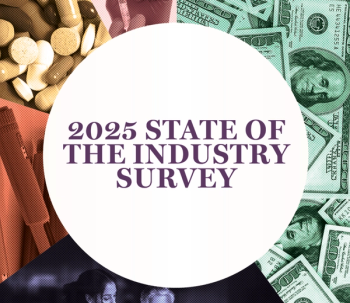
- Managed Healthcare Executive April 2019 Issue
- Volume 29
- Issue 4
How Technology is Addressing SDOH
How technologies are helping health systems think about-and mobilize on-social determinants of health.
Social determinants of health (
SDOH encompass a variety of factors, from housing availability to water access to income to food stability-not typically factors considered by most stakeholders.
There’s no question that SDOH affect health outcomes, but stakeholders are grappling with how big a role they should take in addressing them. As Benjamin Zaniello, chief medical officer at
Related article:
However, he adds, “health systems do tend to gravitate toward where the money is. There is a widespread perception that focusing on SDOH have a measurable impact on healthcare quality and costs. I think there will be increasing investment in this area.”
The trend is already gathering steam: according to a
As more attention is placed on lowering costs, experts say SDOH are likely to become a larger part of the healthcare conversation.
Zaniello says that “In the ED, providers and social workers will tell you that social determinants-specifically, challenges with food, shelter and security-are directly tied to the huge volumes of patients admitted to EDs. The expression for a huge volume of ED admissions, for a ‘hot and a cot,’ was always taken as being dismissive of patient’s needs-but it probably most accurately describes them! And now that health systems are increasingly taking on risk, they are more incentivized to leverage their hard-earned insight into the ways social determinants undermine the cost of healthcare.”
Artificial intelligence
AI,
Sashi Padarthy, AVP, Healthcare Business Consulting at
Currently, he says, “capture of SD data is still very much based on manual, and often time-consuming processes (e.g., care managers often leverage standard paper-based questionnaires). Recent advancements in artificial intelligence and machine learning-new methods of identifying SDoH-have started to show significant promise. These new methods leverage the data that is already present within a patient’s electronic health record as an input to a machine learning model that analyzes and predicts the likelihood the patient is at risk for a SDOH.”
Padarthy points to Lucina Health’s program that utilized AI to identify mothers at risk for pre-term births, taking medical and socio-economic factors into account to determine the best care plan. The initial results of the program, which began in May of last year, have been largely successful: preterm births have been reduced by 13% for the high-risk group.
Another AI technology aiding communication between CBOs and providers is natural language processing (NLP), a tool already in use in many health systems.
Communication
Currently, says Jacob Reider, MD, CEO of the nonprofit
Because of this, one of the largest ways technology is helping address SDOH is by improving communication between CBOs and health organizations. Reider points to the success of close-loop referral systems like
Related article:
Padarthy calls this type of communication “social prescribing,” saying that it’s likely going to become one of the most important ways technology addresses SDOH. “Just like prescribing medications and sending the prescription to a pharmacy, social prescription allows providers to search and notify the nearest shelter, food bank, or transportation service and send the information to them to make it easy for patient and frictionless,” he says.
He points to companies like
Another concrete example Padarthy cites comes from United Healthcare, which
It’s also important to give patients the ability to communicate needs as well, beyond those given during an examination. Rhonda Mims, executive VP and chief public affairs officer at
In the future, experts say this type of information exchange will be much more commonplace.
Reider says that in 15 years, everyone will control all of their health information with a biometric key. Then social and medical care providers, as well as trusted family and friends, will be able to input information, order services (based on their role), and all communicate with one another more easily. “The core of this infrastructure will be communication rather than documentation,” Reider says, “and yet an accurate picture of the needs of an individual and the services provided will be painted automatically by natural language processing (NLP), machine learning, and perfectly-designed user experiences.”
Remote patient monitoring
The most important currently available technology is mobile, according to Harry Soza, president and CEO of
Related article:
Compared with telephonic methods, Soza adds, mobile is far more efficient and results in much more reliable patient information. He says that mobile provides payers and providers opportunities to use targeted outreach methods to educate members both about their disease and also provide information about relevant CBOs. Some-whom Soza refers to as “progressive payers”-are even offering apps to that enable both face-to-face appointments and the ability to flag SDOH issue. Once those issues are flagged, the app can direct them to resources. “Offering this seamless experience will greatly increase the likelihood that members will participate,” Soza says.
Once patients do participate, providers can start to glean more information about patients. Face-to-face interactions via remote patient monitoring (RPM) don’t only involve faces. Mims points out that “RPM allows care to focus on factors that may negatively affect a person’s health that are not controlled inside the hospital. Through phone and video conference, doctors gain perspective on a patient’s life and step in when needed. Also, virtual care allows doctors to see every aspect of a patient’s home setting, which can help assess health issues that a patient might not otherwise reveal.”
Nicholas Hamm is an editor with Managed Healthcare Executive.
Articles in this issue
over 6 years ago
3 Novel Diabetes Treatments Improving Patient Careover 6 years ago
The Future of the ACAover 6 years ago
How Payers Are Keeping Specialty Drug Costs Downover 6 years ago
3 New Approaches to Provide Individualized Diabetes Careover 6 years ago
11 Soft Skills Healthcare Executives Need to Succeedover 6 years ago
How Health Systems Use Pharmacists to Reduce Readmissionsover 6 years ago
Cost Challenges Ongoing with Diabetes Drugsover 6 years ago
Four Ways Health Execs Can Engage ProvidersNewsletter
Get the latest industry news, event updates, and more from Managed healthcare Executive.





















































